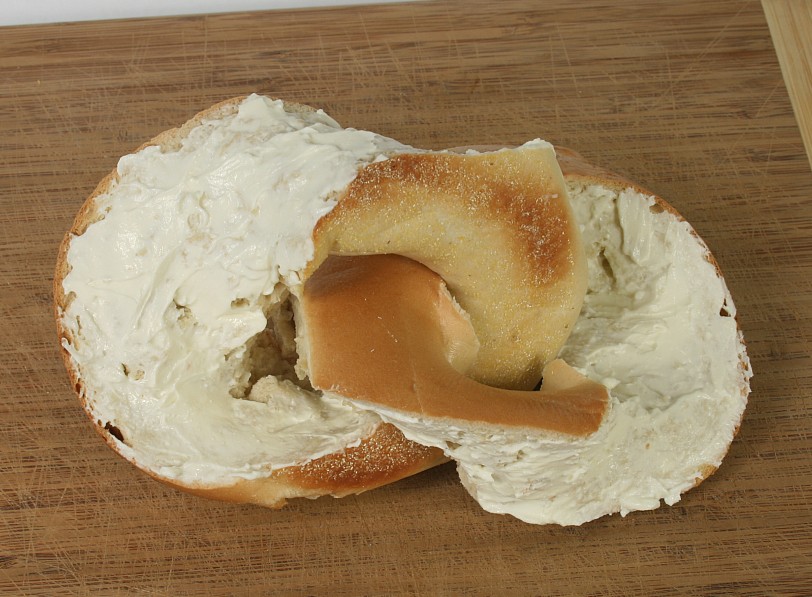It is not hard to cut a bagel into
two equal halves which are linked like two links of a chain.
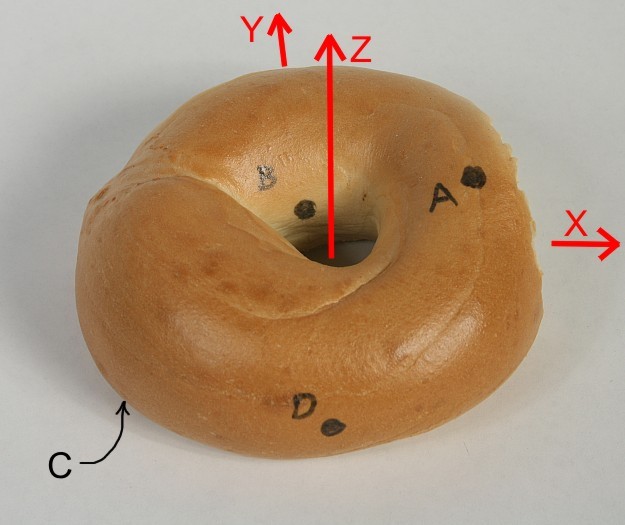
To start, you must visualize four key points. Center the
bagel at the origin, circling the Z axis.
A is the highest point above the +X axis. B is where the +Y
axis enters the bagel.
C is the lowest point below the -X axis. D is where the -Y
axis exits the bagel.
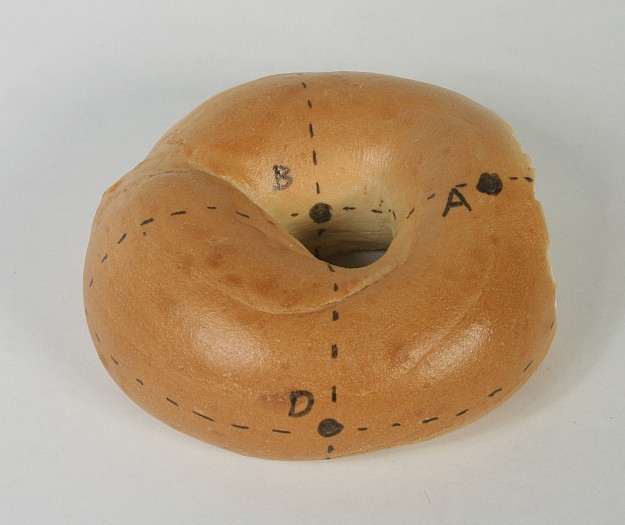
These sharpie markings on the bagel are just to help visualize the
geometry
and the points. You
don't need to actually write on the bagel to
cut it properly.
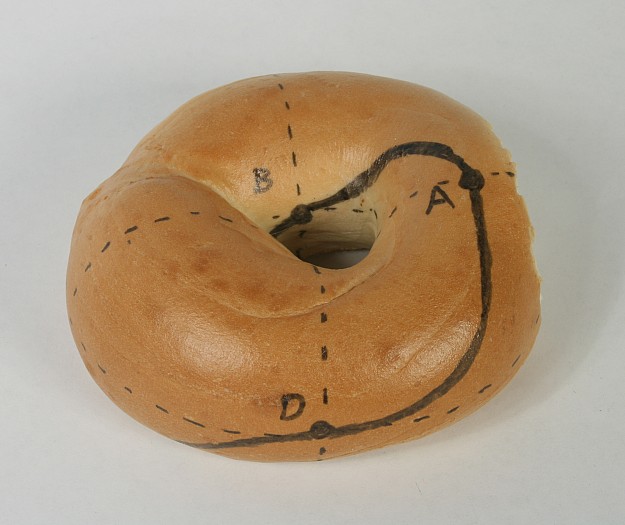
The line ABCDA, which goes smoothly through all four key points,
is the cut line.
As it goes 360 degrees around the Z axis, it also goes 360 degrees
around the bagel.
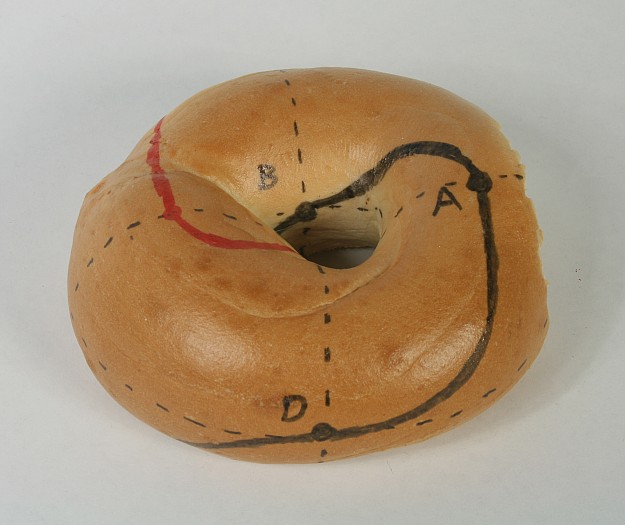
The red line is like the black line but is rotated 180 degrees
(around Z or through the hole).
An ideal knife could enter on the black line and come out exactly
opposite, on the red line.
But in practice, it is easier to cut in halfway on both the black
line and the red line.
The cutting surface is a two-twist Mobius strip; it has two sides,
one for each half.
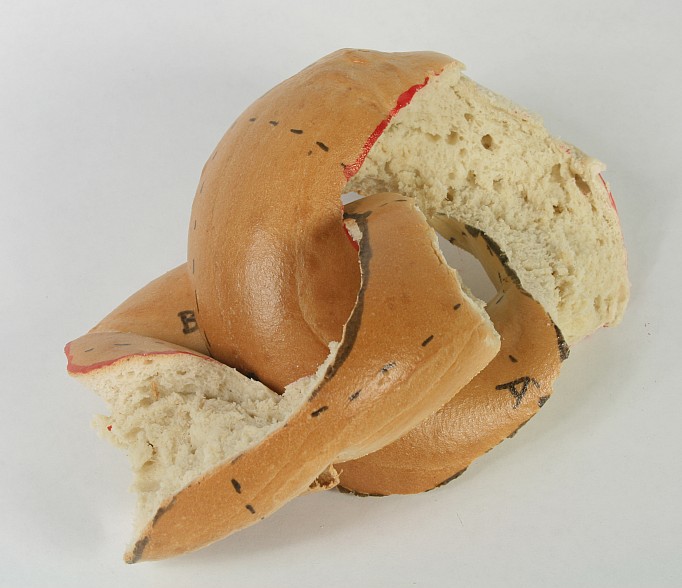
After being cut, the two halves can be moved but are still linked
together, each passing through
the hole of the other. (So when you buy your bagels,
pick ones with the biggest holes.)
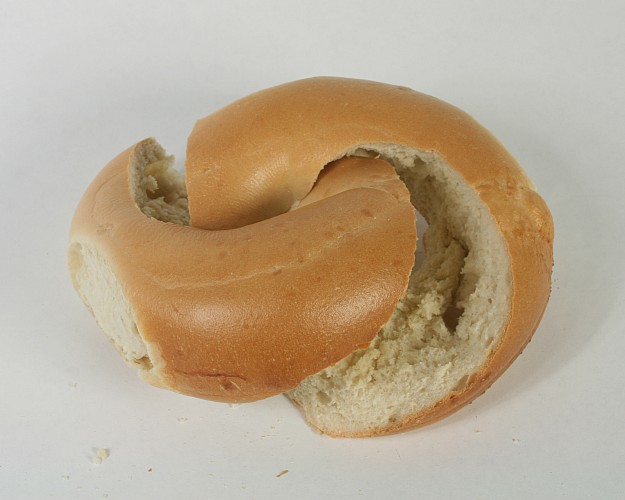
If you visualize the key points and a smooth curve connecting
them, you do
not need to draw on the bagel. Here the two parts are pulled
slightly apart.
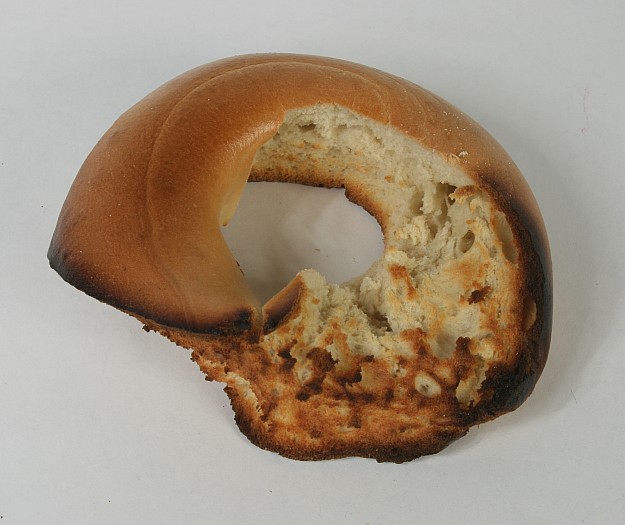
If your cut is neat, the two halves are congruent. They are of the
same handedness.
(You can make both be the opposite handedness if you follow these
instructions in a mirror.)
You can toast them in a toaster oven while linked together, but
move them around every
minute or so, otherwise some parts will cook much more than
others, as shown in this half.

It is much more fun to put cream cheese on these bagels than on an
ordinary bagel. In additional to
the intellectual stimulation, you get more cream cheese, because
there is slightly more surface area.
Topology problem:
Modify the
cut so the cutting surface is a one-twist Mobius strip.
(You can still get cream cheese
into the cut, but it doesn't separate into two parts.)
Calculus problem:
What is the
ratio of the surface area of this linked cut
to the surface area of the usual
planar bagel slice?
For future research:
How
to make Mobius lox...
Note: I have had my students do
this activity in my
Computers
and Sculpture class. It is very successful if the
students work in pairs, with two bagels per team. For the
first bagel, I have them draw the indicated lines with a
"sharpie". Then they can do the second bagel without the
lines. (We omit the schmear of cream cheese.) After doing this,
one can better appreciate the stone carving of
Keizo Ushio,
who makes analogous cuts in granite to produce monumental
sculpture.
Addendum: I made a video
showing how to do this.
